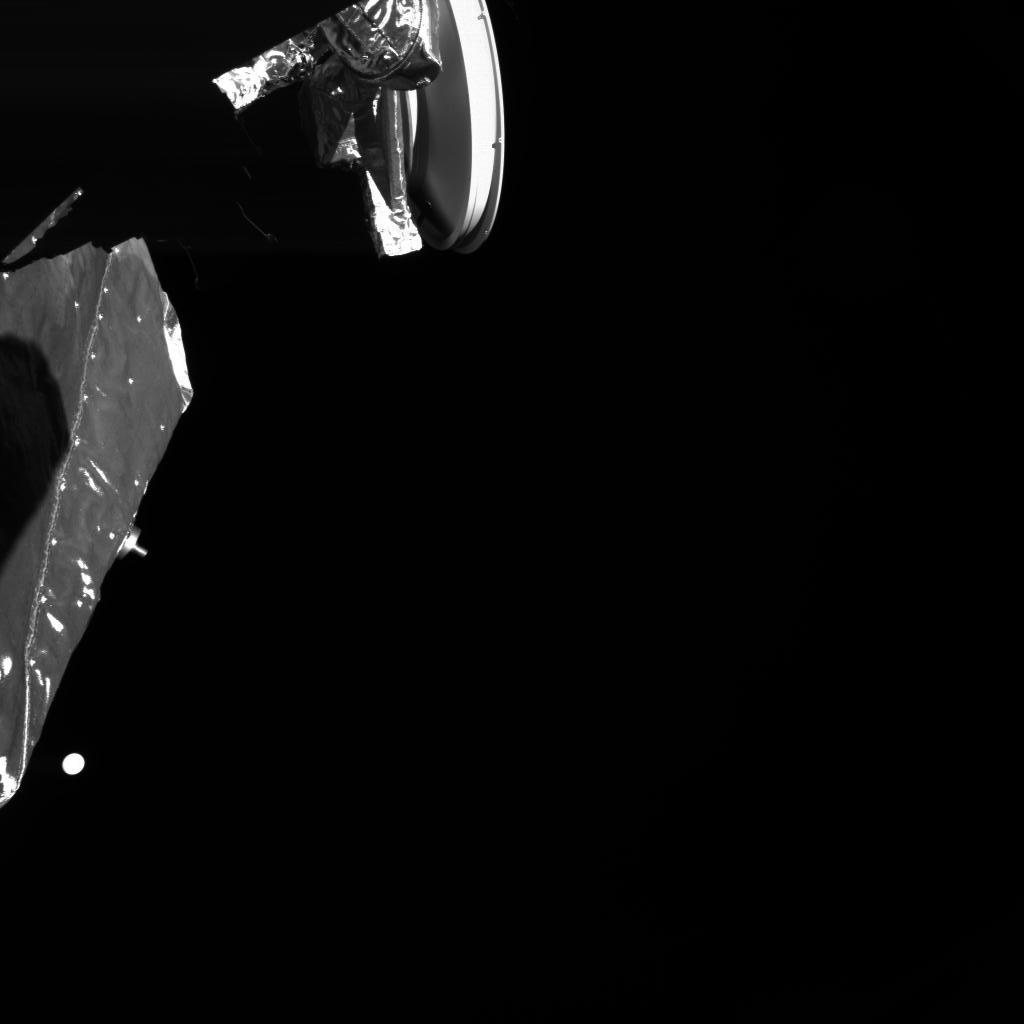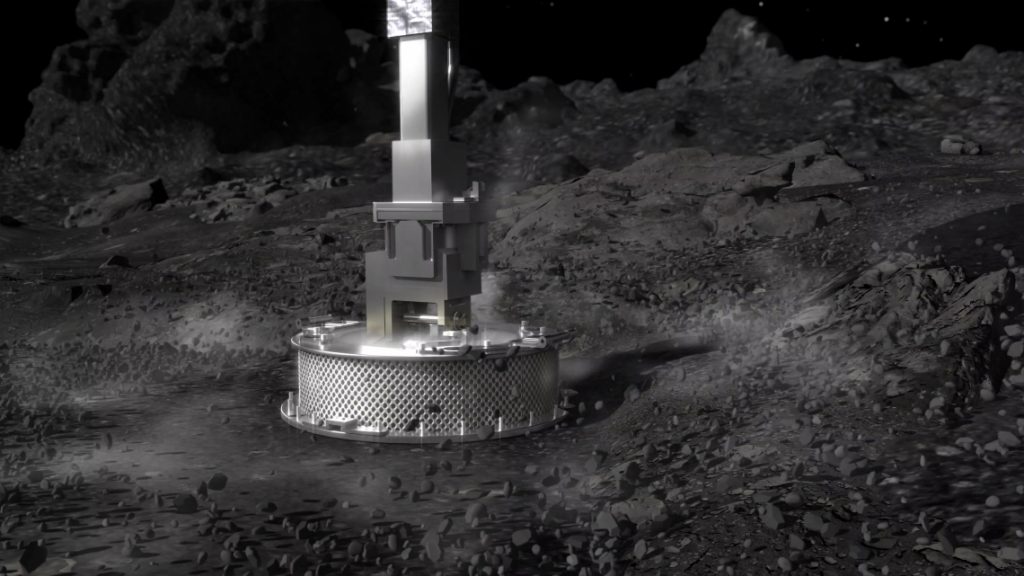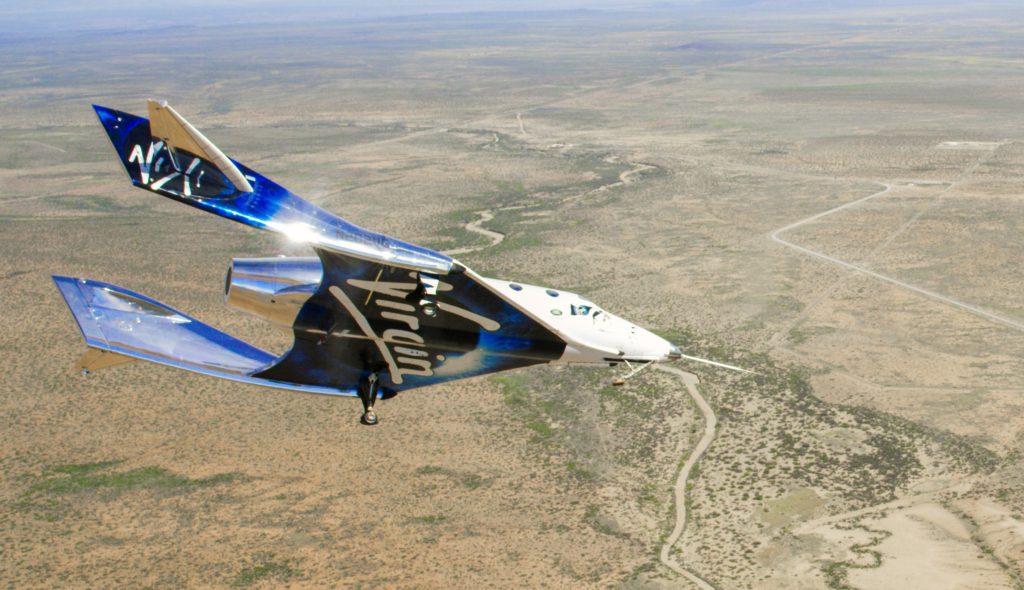Media
Transcript
My first story is on everyone’s favorite not-planet, Pluto. Amazingly, the New Horizons flyby (Hi, Pluto!) provided us with enough data to analyze for years. The latest paper to come out covers the ice on the mountains, which while similar to what mountains on Earth look like, aren’t the same at all.

In this study, scientists looked at the Pigafetta Montes mountain range, and they found that the concentrations of methane ice were highest at higher elevations and then those concentrations decreased downslope to the surface of Pluto. This methane-ice creates bright deposits.
So here on Earth, atmospheric temperatures decrease with altitude, because the air expands and cools as it moves upward. Now the atmospheric temps cool temperatures at the surface. When a humid wind approaches a mountain on Earth, the carried water vapor cools and condenses, clouds form and then we get snow on our mountain tops.
On Pluto, the process goes in the opposite direction. The atmosphere actually gets warmer as altitude increases because methane absorbs solar radiation and is more concentrated at those higher elevations. But the atmosphere isn’t thick enough to have an impact on the surface temps, which stay the same. And Pluto’s winds travel down the mountain slopes.
To understand the process, researchers did 3D simulations at the Laboratoire de Météorologie in Paris. Per the press release: They found that Pluto’s atmosphere has more gaseous methane at its warmer, higher altitudes, allowing for that gas to saturate, condense, and then freeze directly on the mountain peaks without any clouds forming. At lower altitudes, there’s no methane frost because there’s less of this gaseous methane, making it impossible for condensation to occur.
The process also explains the formation of penitentes — ice blades — around the rims of craters like those found in the Tartarus Dorsa region. And yes, I’ve included all these feature names because they are cool. I mean, there’s a Cthulhu Macula region. How fun is that?
From the outer reaches of the solar system, let’s now move all the way in to Venus. Oh, Venus, how you are suddenly the in planet now. And this mission has a great name to say, too — BepiColombo.
BepiColombo is a joint ESA/JAXA mission destined to orbit Mercury. However, to get the orbital mechanics just right for that insertion, the spacecraft has to do a few flybys of Venus. Then there will be six flybys of Mercury, and finally, BepiColombo will settle into an orbit of Mercury in 2025.

This most recent flyby of Venus is a chance to run another test of the craft’s MErcury Radiometer and Thermal Infrared Spectrometer (MERTIS), which will eventually be used to examine the spectra of rocks on the surface of our innermost planet. But with all the news circulating about phosphine being found in the atmosphere of Venus, the team behind this spacecraft will use the infrared sensor to take data from the dense cloud layer around Venus.
Before anyone gets too excited, the press release explains: MERTIS and the other five activated instruments onboard the Mercury Planetary Orbiter will not be able to detect any phosphine molecules from the distance of the flyby. Nevertheless, the flyby is scientifically interesting, as the spacecraft can be used to study Venus as if it were a distant, Earth-like extrasolar planet with a solid surface and dense atmosphere.
You see in the image here that little white spot is Venus, and this is BepiColombo’s first glimpse of our so-called twin planet. We fully expect more news in the years to come and will, of course, bring all the stories to you here on the Daily Space.
And now we turn to a little rubble pile in space that is near and dear to our hearts — Bennu. We are only FOUR days away from the upcoming touch and go (TAG) sample collection maneuver, and all the press releases are coming out. Suddenly, it’s OSIRIS-REx that is our needy little spacecraft. But I think we should forgive it because a) it’s already at its destination, b) it’s about to do something really cool, and c) we all worked really hard to map this asteroid.

For those unfamiliar with the project, last year, CosmoQuest hosted a citizen science project called Bennu Mappers. And boy, did we map. We mapped boulders and rocks and rocks and pebbles and more rocks. And then the OSIRIS-REx team analyzed our thousands of images and picked four possible sampling locations. In the end, they selected Nightingale Crater, and that is where our favorite little craft will sample next week.
The mechanism for this sample is pretty neat. The sampling head shown here will, per the press release: make contact with Bennu’s surface for around 10 seconds. When the spacecraft detects contact, it will fire one of three nitrogen gas bottles, and much like a reverse vacuum cleaner, stir up surface material – called regolith – inside the sampler head before the spacecraft backs away.
There’s even a backup system that will use sticky pads to collect material if the nitrogen gas fails to work for some reason.
Then, so long as the sample is at least 60 grams, the craft will stow the sample and perform a pirouette in space to reinsert itself into Bennu’s orbit. And then we get to wait until 2023 for that sample to return to Earth for analysis.
I will note that if that first attempted TAG doesn’t collect the required 60 grams, there is the possibility for another go. Or two. There are three nitrogen gas canisters after all.
And we’ll be covering the sampling live next week, so please stay tuned.

Finally, I want to give a hearty and envious congratulations to Southwest Research Institute planetary scientist and friend of Pluto Alan Stern, who has been selected to fly aboard Virgin Galactic’s SpaceShipTwo to perform the first NASA-funded experiments from a commercial spacecraft. The mission is yet-to-be scheduled, but we’ll be keeping a close watch on how this story progresses.
Learn More
Pluto’s Mountains Are Snowcapped But Not Like Earth’s
- NASA press release
- “Equatorial Mountains on Pluto are Covered by Methane Frosts Resulting from a Unique Atmospheric Process,” Tanguy Bertrand, François Forget, Bernard Schmitt, Oliver White &Will Grundy, 2020 Oct. 13, Nature Communications
Venus Flyby on the Way to Mercury
Why Scooping an Asteroid Sample Is Harder Than It Looks
Planetary Scientist to Fly on NASA-Funded Commercial Space Flight
Credits
Written by Beth Johnson
Hosted by Beth Johnson
Audio and Video Editing by Ally Pelphrey
Content Editing by Beth Johnson
Executive Producer Pamela Gay
Intro and Outro music by Kevin MacLeod, https://incompetech.com/music/


 We record most shows live, on Twitch. Follow us today to get alerts when we go live.
We record most shows live, on Twitch. Follow us today to get alerts when we go live.